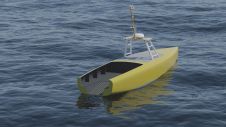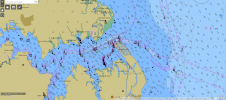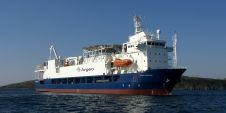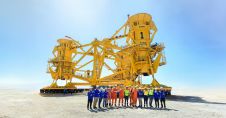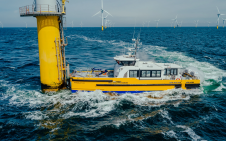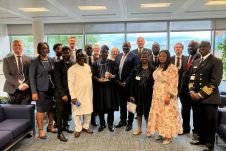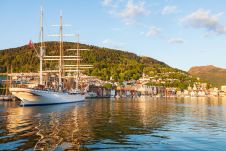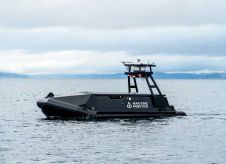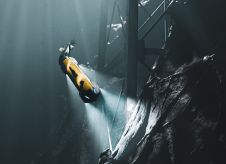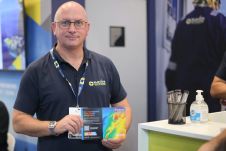Australasian Hydrographic Society
News
East Australia Region
After several years of yeoman service as the Honorary Treasurer of the East Australia Region of the Society, Patrick Roche has had to relinquish the office due to professional and domestic demands. We are all very grateful to Patrick for his endeavours. Roger Harvey, another EAR stalwart, has volunteered to fill the office, for which we are all very grateful.
New Zealand Region
The Annual General Meeting of the New Zealand Region of the Society has provisionally been set for Thursday 18th November 2004 to be held at The Overseas Passenger Terminal, Wellington. A meeting of the LINZ Hydrographic User Group is to be scheduled in conjunction with the above AGM.
Australian Antarctic Division - Tide Gauges
Further to the March 2004 Report (Hydro International May 2004) it can now be confirmed that the tide gauges at Davis & Zhongshan were visited in the summer of 2003/2004. Data has also been downloaded from Mawson, Casey and Macquarie Island.
Testing the Boundaries
Commander Paul Hornsby RAN, President of the AHS recently spoke to the following brief.
Speed is everything. In warfare as in business, no axiom is more important. Irrespective of the school of thought on the principles of war to which you may adhere, speed is first amongst equals. It is a paradox that in maritime warfare, speed of advance, rate of effort and freedom of manoeuvre increasingly rely on its most stately of crafts, hydrography.
When I was a junior officer in the Royal Australian Navy, many of us when considering which specialty we would pursue in our careers, steered away from the ‘art of exploration’ as we perceived it to be too sedate - and way too much maths! How time has changed our attitudes. Today in the SE Asian region, where a majority of the area is inadequately surveyed, the race is on to find the ways and means to rapidly acquire hydrographic, oceanographic and geodetic data for both commercial and military purposes. In the military context, increasingly complex systems designed for a variety of survey operations have placed a great challenge on manufacturers, planners, support organisations and operators to work collaboratively.
To meet this challenge in Australia, the Royal Australian Navy has recently established a new evaluation process to orchestrate the acceptance of new capability. This is known as Naval Operational Test & Evaluation (NOTE) and covers the period from when a contractor delivers a new capability, having adequately demonstrated that it meets basic specifications, to when the Navy is satisfied that performance is known in all operational conditions.
The previous system for conducting operational test & evaluation (OT&E) was based on the US Navy’s successful model. A key stipulation under this system was that a new class of ships would only be accepted into naval service once the performance of all systems was fully met and fully known. For the USN this works well as prototypes can be built and fully tested prior to committing to a full construction programme. For the Royal Australian Navy, however, the limitations of domestic infrastructure, matched against the extensive time it takes to conduct proper operational testing usually demand that commitments must be made to construction programmes without the luxury of prior full testing of a prototype vessel.
Accordingly, the challenge is to identify and fix any deficiencies found during operational testing while further ships are being launched. Today, the Australian Department of Defence has fairly sophisticated contracting arrangements to ensure this happens smoothly. However, when things fail to go exactly as expected first time, it remains a challenge to ensure all parties achieve their objectives. This is never truer than in undersea research and the development of hydrographic and oceanographic survey systems.
As an Operational Test Director I was often asked, why not make constructors demonstrate the performance of a new vessel through all operational conditions before considering initial delivery? I have no doubt that many contractors would salivate at the prospect of how much that would add onto the price tag of a new ship. Additionally, this neglects the training and systems experience required to be gained by new crews, a requirement that is complemented by operational testing. This is the first issue to be considered by medium-size maritime operations when bringing new capability on line. To fail to conduct your own operational evaluation with your own crews is prohibitively expensive and neglects the operational experience that will flow on from using crews of average capability, known as indicative crews, as opposed to teams of sailors of superior capability and highly experienced contractors. These are often used in the initial testing of ships and equipment to the limit on first commissioning a new class of ship.
Accordingly, if conducting your own operational testing is pragmatic, the second issue is that the expense of simply running a ship often demands employing the ship concurrently with conducting OT&E. Again, if well-planned these activities too are complementary. For example, deploying a ship for a joint or combined exercise will invariably garner more knowledge than if a new asset is tested in isolation.
The third issue, most often forgotten, is that due to the long periods between contracting the construction of a new ship, building it and eventually commencing sea trials, risk mitigation must allow for a reasonable degree of predicting technology at the time of delivery. Most maritime operations recognise that to do otherwise invites system obsolescence by the time a new ship commences sea trials. The risk, of course, is that full functionality in complex onboard systems may not have been established when the platform itself is ready for delivery. This can be a vexatious issue if deficiencies in functionality fail the litmus test of whether reasonable OT&E can commence.
I am of the opinion that successful programmes under these circumstances have a hallmark that distinguish them from those that become bogged down in protracted disputes, and that is the commitment by all parties to engage in operational research and analysis. This means going beyond the original testing regime and specification envelope to find alternative or lateral procedures to achieve desired functionality. To this end, it has been my experience that due to the myriad factors that can attribute to performance, it is undersea and survey systems that offer the most potential for such operational analysis, However, going beyond the envelope requires an uncommon level of trust, sound process and contractual sophistication.
The Royal Australian Navy’s new NOTE process aims to take all these issues into consideration. The process begins at the point of contractual delivery, which from the Navy’s perspective is now termed Initial Operational Release, and coincides with the Navy issuing an Initial Operational Capability Statement (IOCS). This outlines the limitations of a system based on results from contractor trials. What this means in practical terms is that a new system or capability is considered to be available for both limited operational employment and operational testing. As testing under operational conditions progresses, further Operational Capability Statements are issued to reflect a ship's or system's release for greater employment, until such time full functionality and full systems knowledge is achieved. To support this, the Navy’s Test Evaluation & Acceptance Authority has concurrently established the Maritime Operational Analysis Cell (MOAC). This is a collaboration of defence scientists and senior operators specifically aimed at pushing the boundaries of new systems to establish greater knowledge of their full capability.
For Australia the testing of sonar and route survey systems, utilising a more robust process and a dedicated analysis cell, has already delivered dividends in speed and functionality for the Navy, in addition to benefits for contractors and manufacturers alike.
Contact
Australasian Hydrographic Society
Att. E.R. Whitmore
4/6 Carrington Street
Wahroonga,
New South Wales 2076
Australia
T: +61 2 94892091
F: +61 2 94892048

Value staying current with hydrography?
Stay on the map with our expertly curated newsletters.
We provide educational insights, industry updates, and inspiring stories from the world of hydrography to help you learn, grow, and navigate your field with confidence. Don't miss out - subscribe today and ensure you're always informed, educated, and inspired by the latest in hydrographic technology and research.
Choose your newsletter(s)















